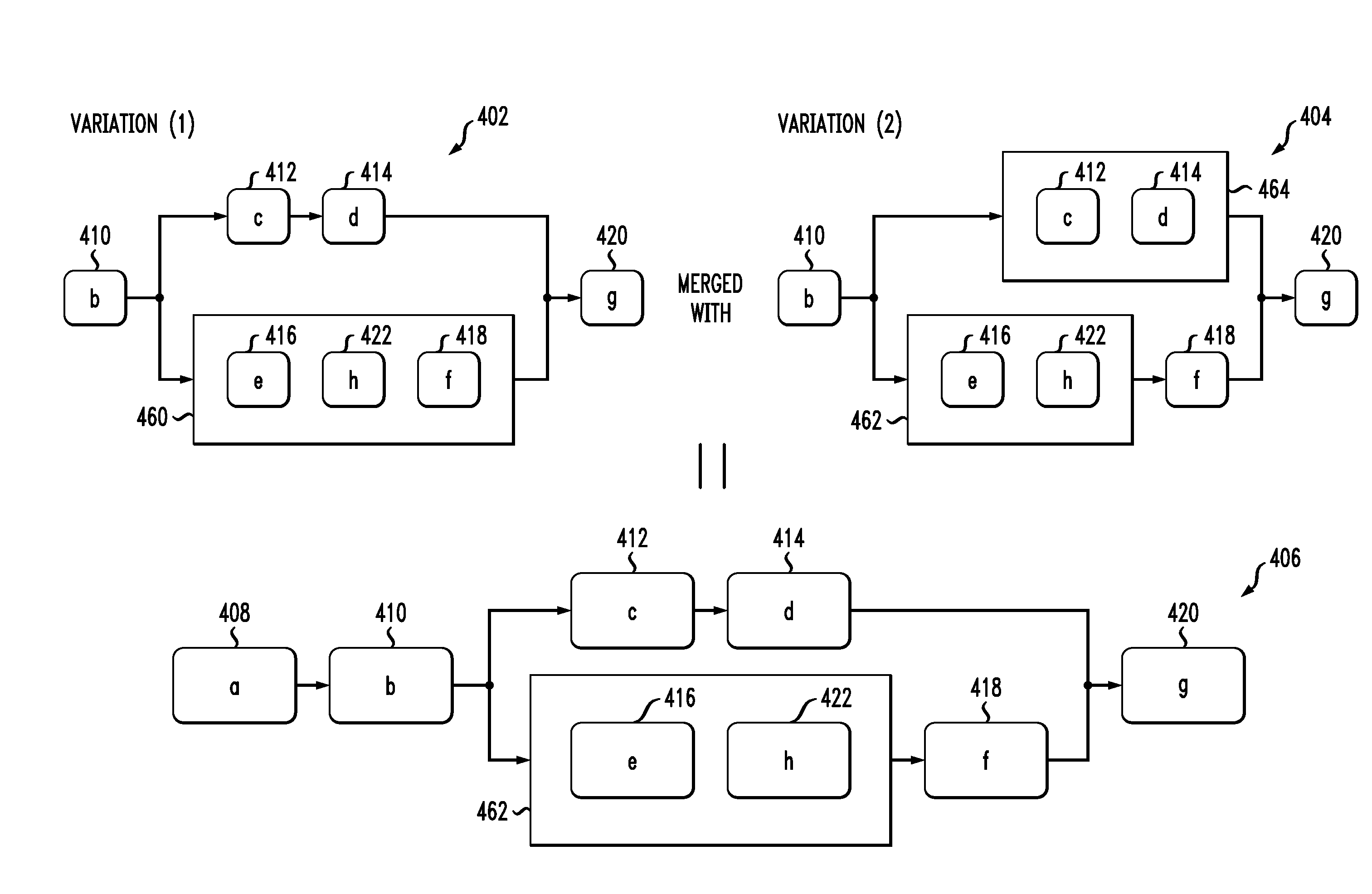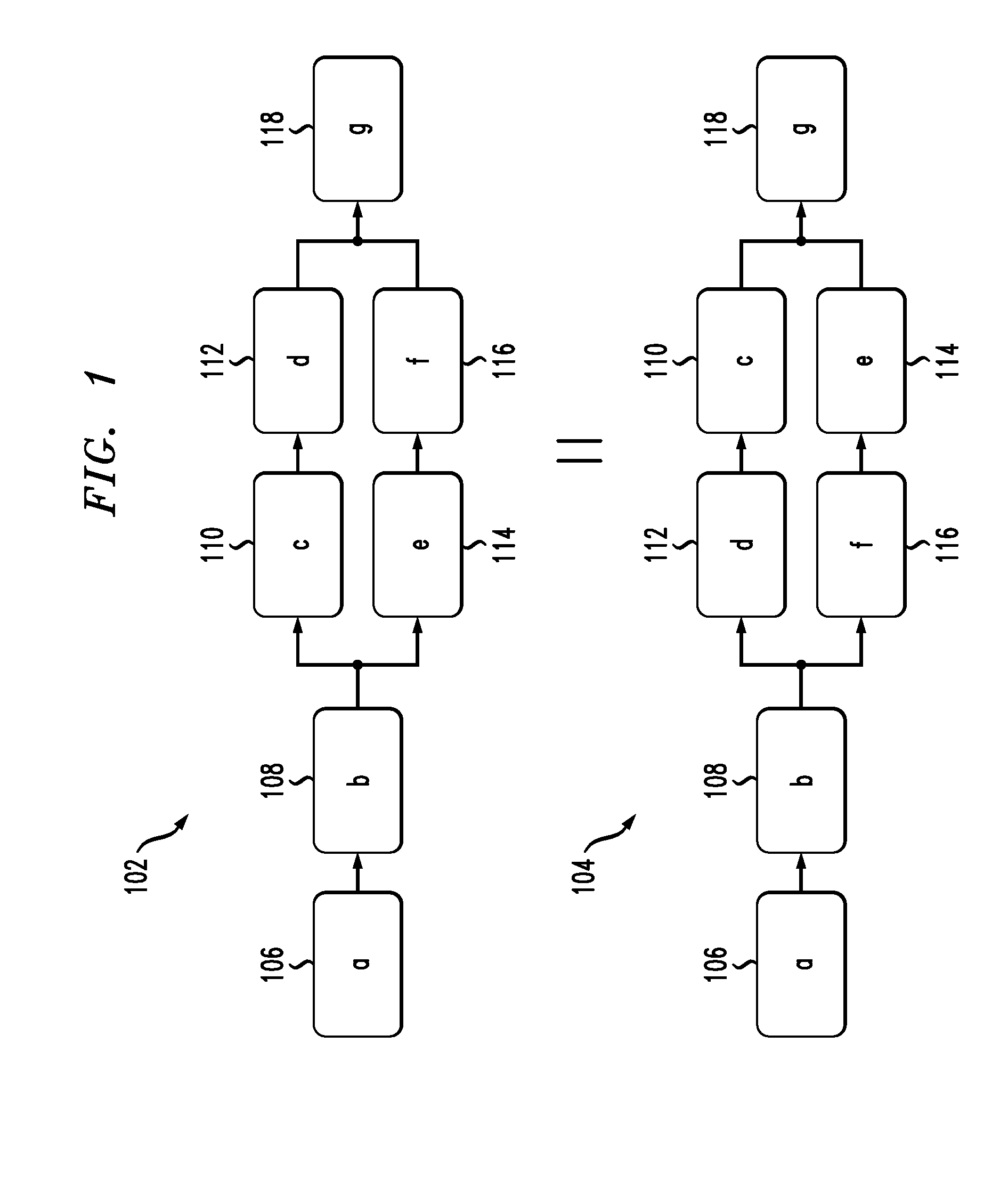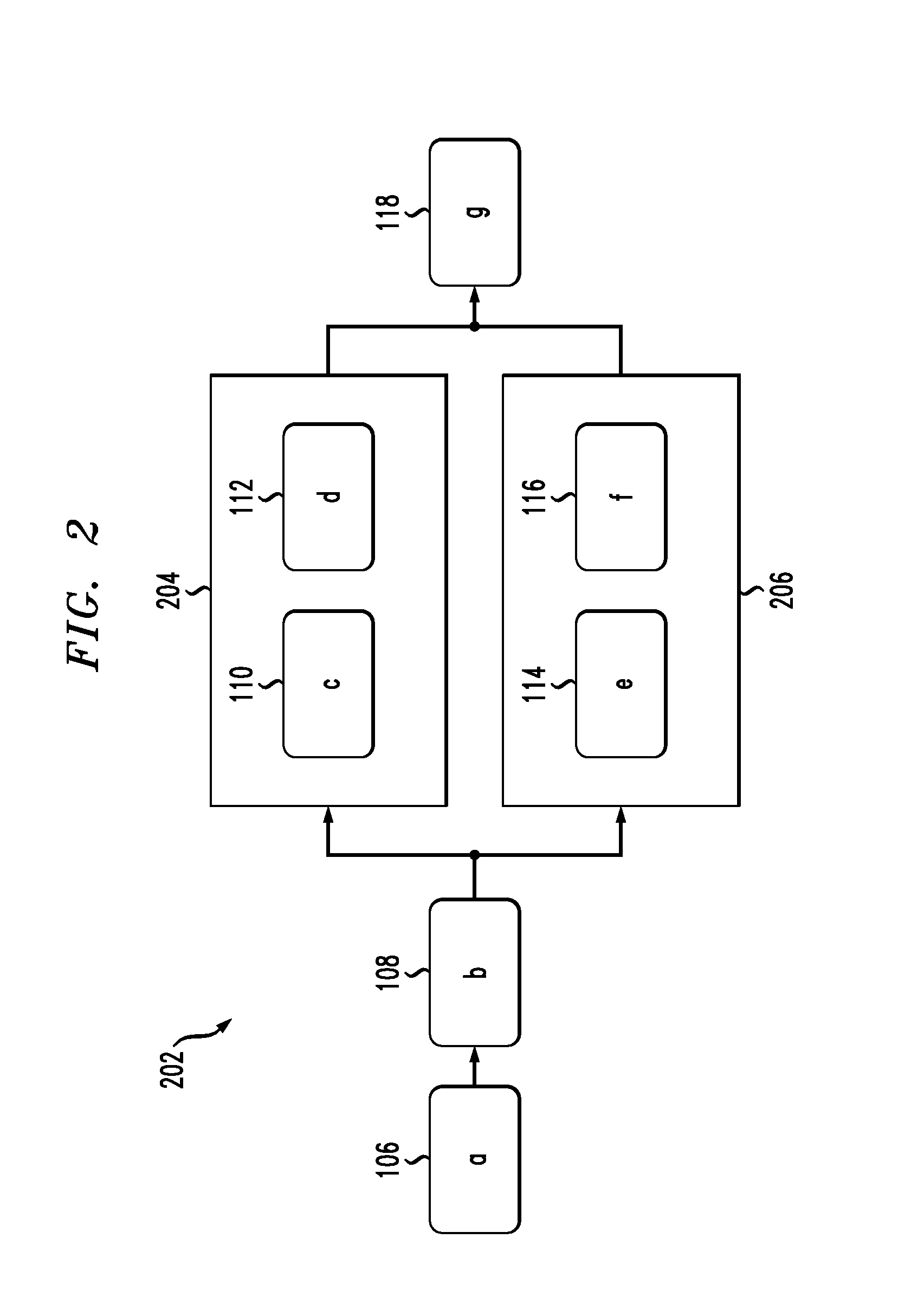System and method for constructing flexible ordering to improve productivity and efficiency in process flows
a flexible ordering and process flow technology, applied in the field of computer-aided process modeling, can solve problems such as inefficiency during multi-tasking activities, and achieve the effect of improving productivity and efficiency in process flows
- Summary
- Abstract
- Description
- Claims
- Application Information
AI Technical Summary
Benefits of technology
Problems solved by technology
Method used
Image
Examples
Embodiment Construction
[0022]In reality, flows can be much more flexible (in terms of execution order) than what is allowed by current modeling tools. For instance, Tasks A, B, and C may need to be executed (in any order) within a pre-specified deadline (or constraint). Capturing this flexibility, according to one or more embodiments of the invention, allows systems to enhance, and even to optimize, multi-tasking activities. Looking at traditional models, it will be appreciated that multiple challenges are raised in providing users with a precise, yet easy to follow, methodology for capturing the flexibility in execution order and the criticality of execution time. In addition to human users, one or more inventive embodiments also provide modeling techniques that can be beneficial to automatic process optimization program code in scheduling the process and reducing, or even minimizing, one or more of time, cost, and so on (alternatively, there may be other parameters that it is desirable to increase, or e...
PUM
 Login to View More
Login to View More Abstract
Description
Claims
Application Information
 Login to View More
Login to View More - R&D
- Intellectual Property
- Life Sciences
- Materials
- Tech Scout
- Unparalleled Data Quality
- Higher Quality Content
- 60% Fewer Hallucinations
Browse by: Latest US Patents, China's latest patents, Technical Efficacy Thesaurus, Application Domain, Technology Topic, Popular Technical Reports.
© 2025 PatSnap. All rights reserved.Legal|Privacy policy|Modern Slavery Act Transparency Statement|Sitemap|About US| Contact US: help@patsnap.com



